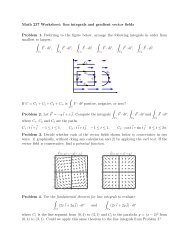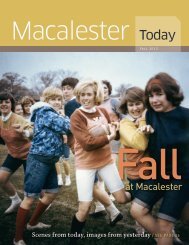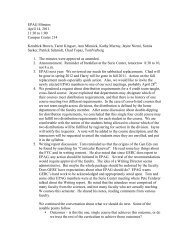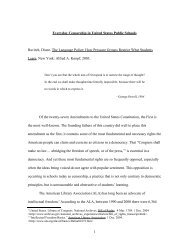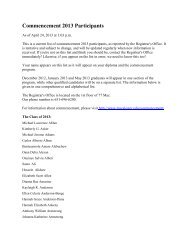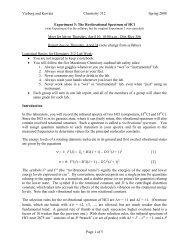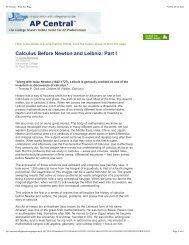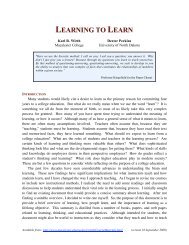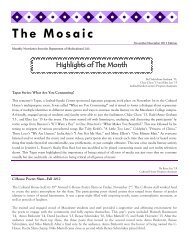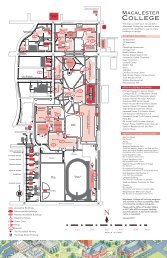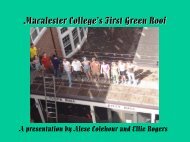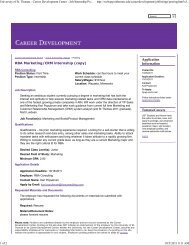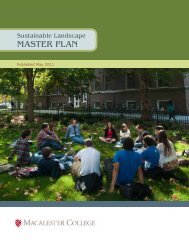INTERNATIONAL STUDENT HANDBOOK - Macalester College
INTERNATIONAL STUDENT HANDBOOK - Macalester College
INTERNATIONAL STUDENT HANDBOOK - Macalester College
Create successful ePaper yourself
Turn your PDF publications into a flip-book with our unique Google optimized e-Paper software.
Visa<br />
A U.S. visa is a passport page-sized sticker in your passport. It is used for entry into the<br />
U.S. and can only be obtained from a U.S. Embassy or Consulate outside the U.S. The visa<br />
indicates what status you have upon entry to the U.S., as well as the date of issuance and<br />
expiration. After you enter the U.S., the visa is unimportant unless you leave and wish to<br />
re-enter. If you plan to travel outside the U.S., and your visa has expired, you should contact<br />
Aaron, the ISP Director, to obtain an I-20 to use to apply for a new visa. Never write<br />
Form I-94<br />
When you enter the U.S., an immigration inspector (CBP Officer) determines how long you<br />
may stay in the U.S. Your Form I-94 is stamped when you are admitted. The I-94 name<br />
spelling must match the passport and visa name spelling exactly. This information is written<br />
on the I-94 form and placed with your passport. This form contains two valuable pieces<br />
of information and must not be lost; the vital information is the eleven digit admission<br />
number in the upper portion and the Duration of Status (D/S) in the right hand corner. The<br />
Form I-94 is not a visa – it is an Arrival-Departure Record only. Always keep a photocopy<br />
of both sides of the Departure section you receive on admittance.<br />
Web references for further travel and status information:<br />
www.dhs.gov : Department of Homeland Security<br />
www.uscis.gov : Citizenship and Immigration Service<br />
www.cbp.gov : Customs and Border protection<br />
www.ice.gov : Immigration and Customs Enforcement<br />
Employment<br />
International students in the United States in F-1 status may not accept off-campus employment<br />
unless they receive authorization from immigration. Working without authorization,<br />
being one of the most serious violations of visa status, can result in you having to return<br />
home to obtain a new visa. It can also result in immediate deportation. Please talk to<br />
the ISP Director if you have any questions about employment authorization.<br />
On-Campus Employment<br />
On-campus employment is considered a form of financial aid. Students authorized to work<br />
on campus by the financial aid office may do so without any special immigration work authorization,<br />
but are governed by the following immigration rules:<br />
� Employment is performed on the school’s premises, or considered student employment<br />
by the Financial Aid Office.<br />
� Employment must not exceed 20 hours per week when school is in session.<br />
� Employment may be full-time when school is not is session if the student is both eligible<br />
and intends to register for the next term.<br />
� Students may not be employed on campus after completion of their studies (unless doing<br />
this under the terms for Optional Practical Training)<br />
Off-Campus Employment – General Eligibility<br />
To be eligible for any of the options listed below, you must currently be on an F-1 visa and<br />
have studied at least nine months in the United States at a higher education institution on<br />
a valid non-immigrant visa (e.g. F, J, H, E, L, M).<br />
44



